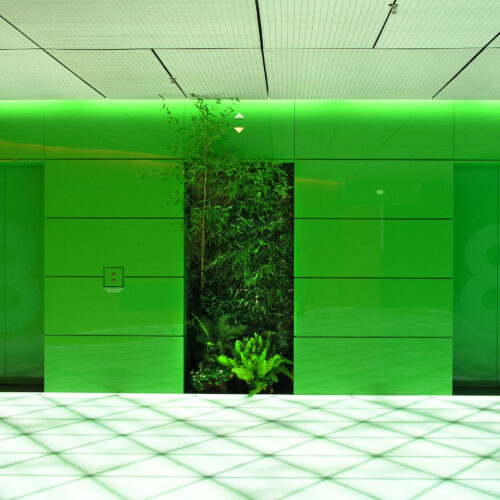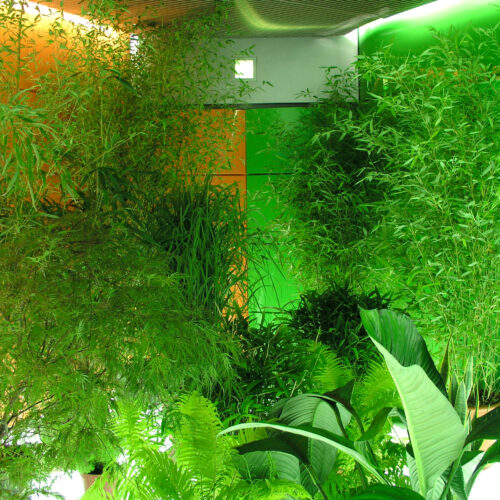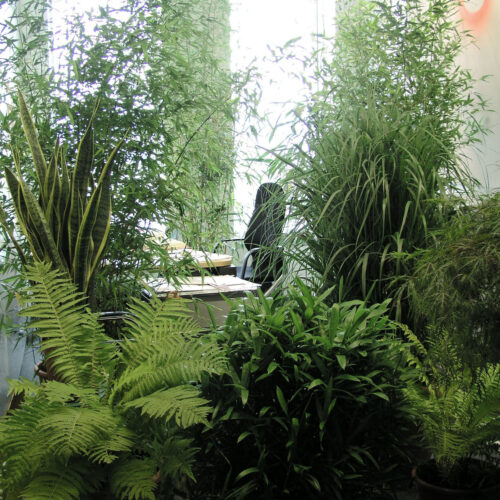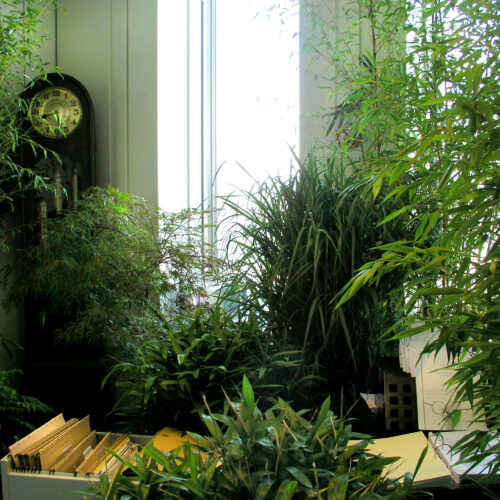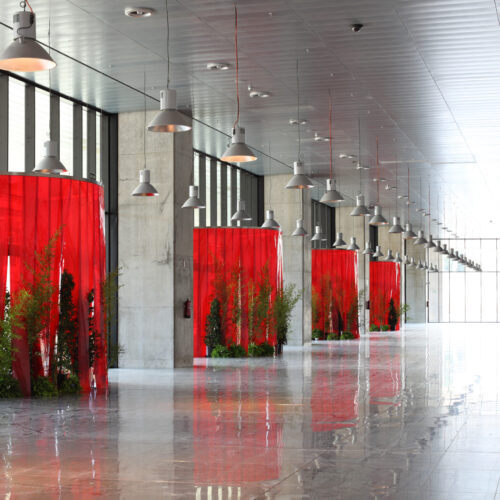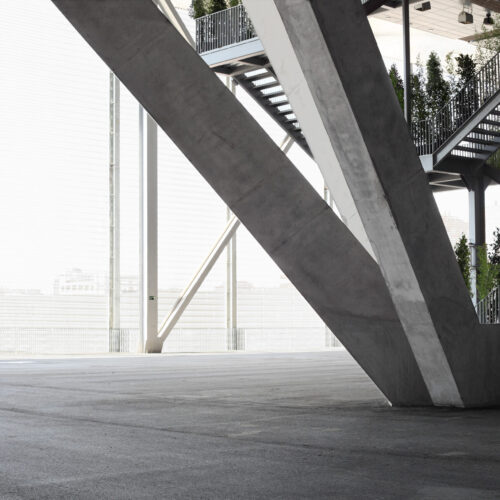BÖRUS
El paisaje no es lo que circunvala el espacio, no es tampoco esa proporción de verde organizado en función de las ciudades, centros neurálgicos, puntos geométricos, matemáticos. El paisaje no es el lugar neutro en el que poder colocar objetos, estructura, más bien al revés, el paisaje invade, se apropia de estas para extenderse de manera definida por los límites impuestos. A través del paisaje pretendemos proyectar nuestro patrimonio perceptivo limitado por nuestra mirada. Al final se produce una convivencia entre las extensiones del paisaje como proyección de una conciencia ensoñadora y las limitaciones de las estructuras creadas por el hombre.
En mi serie Börus he realizado diferentes instalaciones en espacios arquitectónicos, lugares donde el hombre, con su actividad social, define un territorio a modo de espacios generados por morfologías de origen económico, político, cultural y social. Son oficinas, salas de espera, entradas a edificios, lugares de ocio, en diferentes ciudades. Eso no importa, la configuración del territorio es también una morfología social, como lo demuestra la ciudad en su principio organizativo. Al final, tenemos que admitir que estos lugares se definen en espacios neutros, sin identidad, sólo su utilidad les configura un éxito de existencia. Y, sin embargo, nos desenvolvemos en ellos como contextos diarios de nuestro deambular cotidiano, trabajamos en ellos, nos desplazamos por ellos, aterrizamos en ellos, nos hospedamos en ellos.
A través de la escenificación in situ, las plantas se apoderan del espacio en una suerte de invasión apacible, casi decorativa, dentro de espacios de trabajo y de ocio. Se transforma directamente el espacio físico otorgándole una nueva realidad en sí misma. De alguna manera, las plantas sustituyen el deambular de las personas en estos espacios que aíslan, limitan la realidad externa para consignar una nueva. Los edificios se convierten en espacios donde los seres luchan por avanzar dentro de un nuevo mundo, sometiéndose a él. Estos entornos hospedan al hombre en el diseño de su vida. Pero el paisaje no se identifica con estos territorios artificiales, espontáneos o manipulados. El paisaje parcial y subjetivo no sirve para la organización del espacio. El paisaje no se agota, se mantiene inmutable, conserva su significado, mantiene una consciencia de sí mismo.
Las formas que nos brinda la naturaleza con esos contornos impredecibles se convierten en una expresión de sí misma. Se crea así una contrariedad armoniosa entre las líneas estrictas ofrecidas por las estructuras de los edificios y esas formas orgánicas que brinda la naturaleza. Es, además, otra manera de descifrar la relación entre naturaleza y estructura. Las formas naturales son convincentes incluso fuera de su contexto, se apoderan de cualquier entorno y lo dulcifican. Es un revelarse de formas en consonancia con la intervención material e inmaterial del hombre. Es quizá la magia que proviene de lo esencial, de un origen. Y, de alguna manera, nos encontramos en estos nuevos paisajes con una fusión de espíritu y materia.
BÖRUS
Landscape is not what lies around a space, and neither is it a quota of greenery arranged according to the dictates of the planning requirements of our cities, hubs of activity, spaces of geometry and mathematics. Landscape is not a neutral place where objects and structures can be positioned. On the contrary, landscape invades and takes over objects and structures as a means of expansion within the limits to which it is subject. Landscape is our vehicle for projecting our perceptual heritage, a heritage conditioned by our gaze. In the end, extended landscapes coexist alongside the limitations of man-made structures as a projection of a dreamy awareness.
In my Börus series, I set up different installations in architectural spaces, places where Man, through his social activity, defines territory in terms of spaces morphologically defined by economic, political, cultural and social interaction. These settings included offices, waiting rooms, building lobbies and leisure venues in different cities. Notwithstanding, territorial organization itself is also a form of social morphology, as can be seen in the organizational principles underlying the notion of “city”, and, ultimately, we have to admit that such places are essentially neutral, lacking in identity: the success of their existence is determined only by their use. And yet we frequent them as daily contexts of everyday activity. We work in them, walk through them, land in them, spend the night in them.
In these in situ installations, plants take over spaces in a kind of peaceful, almost decorative invasion of work and leisure venues. Physical space is transformed directly, and thereby endowed with a new reality. The plants somehow substitute the people who come and go through the spaces – spaces which isolate external reality to forge a new one. The buildings thus become spaces in which living beings are subjected to and fight to make headway in a new world. These environments are the settings in which humans organize their lives. But landscape has little to do with such artificial, spontaneously created or manipulated zones. Partial, subjective landscapes are of no use for spatial organization: the landscape remains immutable, unexhausted, preserving all its meaning and self-awareness.
The forms Nature offers, with their unpredictable, complex shapes, become a form of expression in themselves, resulting in a harmonious contrast between the strict linearity of architectural structures and organic natural forms. This is also a new way of deciphering the relationship between Nature and structure. Natural forms are convincing even when they are out of context. They take over and sweeten any environment. It is a revealing of forms in consonance with the tangible and non-tangible intervention of human beings. Perhaps it is the magic of the essential, of an origin. And in these new landscapes, we somehow see a fusion of spirit and matter.

